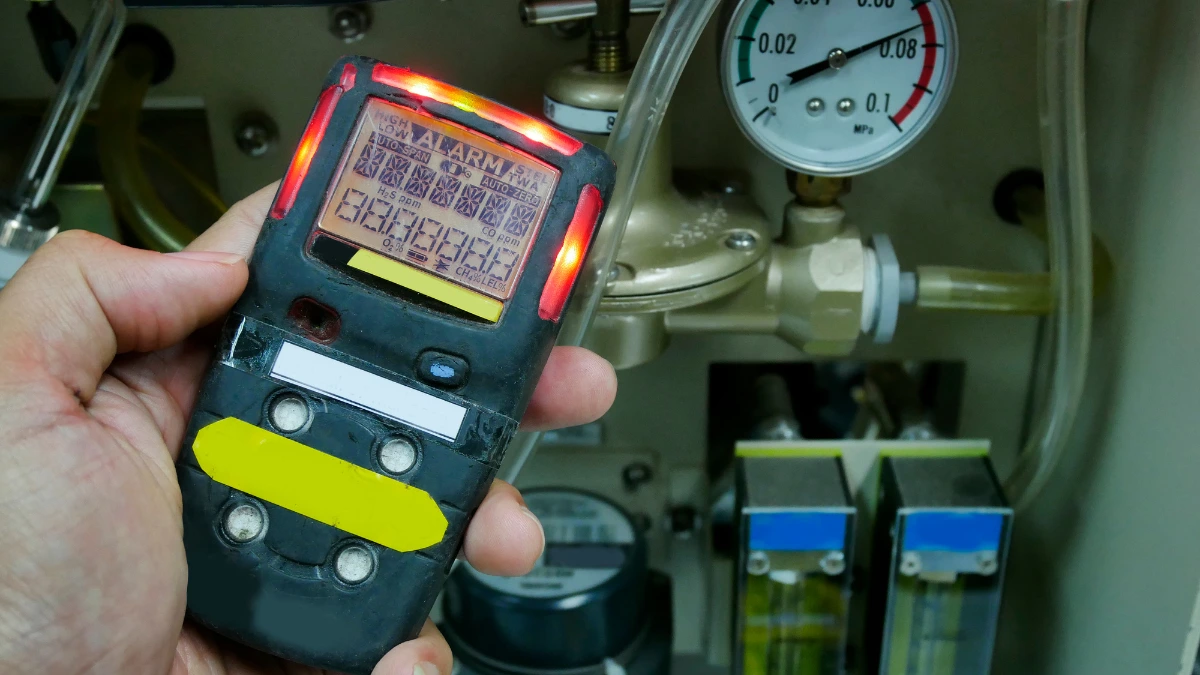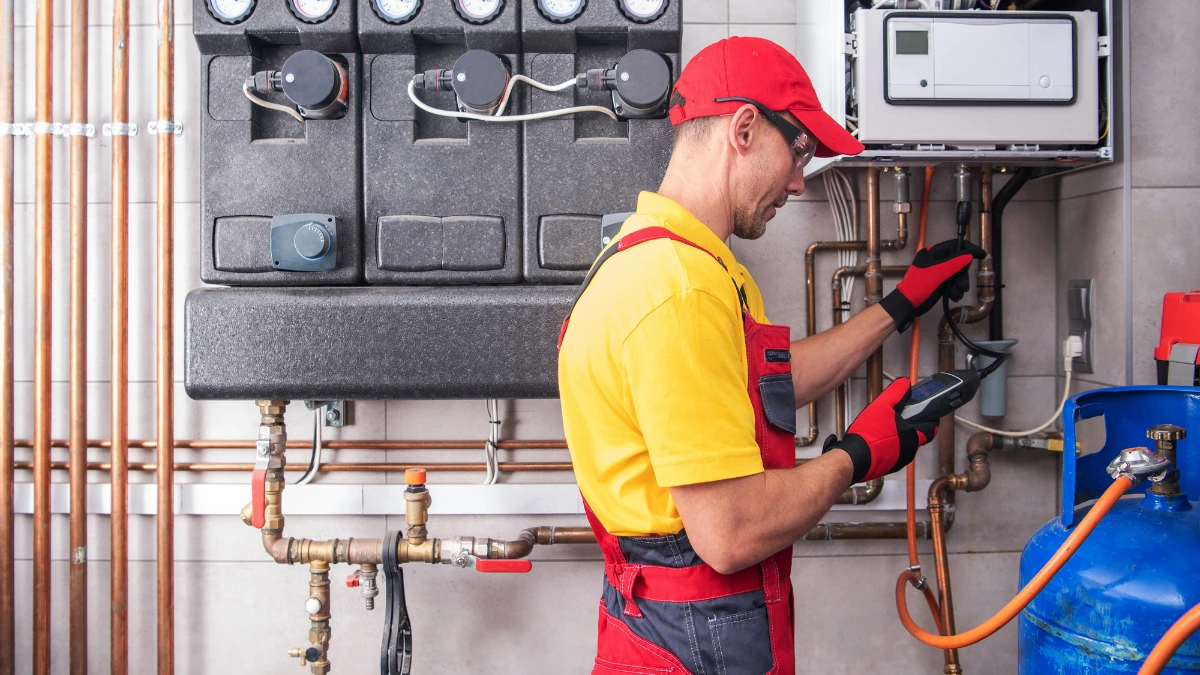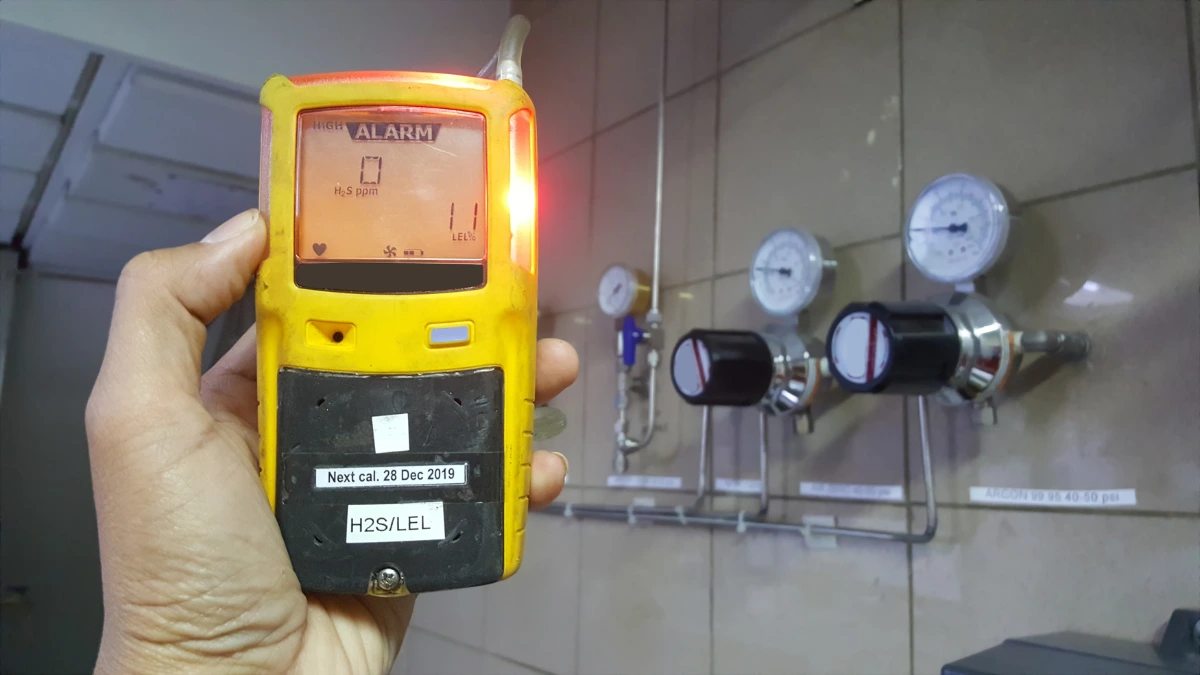A gas detector is a lifesaving tool that is used in many sectors, such as mining, manufacturing, oil and gas, and public facilities. With various types of gas detectors, technicians can detect the presence of toxic gases or gas leaks.
The types of gas detectors are related to their function, their use, and their sensor technology.
In this article, we will provide more information about the types of gas detectors to help you determine the best one.
Types of Gas Detectors Based on Function

Single gas detector
A single gas detector is a type of detector designed to detect only one specific type of gas. Examples include detectors for hydrogen sulfide (H2S), carbon monoxide (CO), or oxygen (O2).
Multi-gas detector
As the name suggests, a multi-gas detector can detect more than one gas threat. This device is more commonly used in enclosed spaces, as they are more likely to be exposed to multiple types of gas simultaneously.
A multi-gas detector combines multiple sensors, such as electrochemical and catalytic sensors, into a single device, making it suitable for protecting against various types of gas threats, such as H2S, methane, and CO.
Based on Use

Fixed gas detector
A fixed gas detector is a device that is permanently installed in a specific area. Its function is to continuously monitor gas concentrations at a predetermined location.
Portable gas detector
As the name suggests, a portable gas detector is a device that is easy to carry around. With its portability, this device can measure gas concentrations at various desired locations.
Based on Sensor Technology

Electrochemical gas detector
An electrochemical gas detector is a device that detects gases using electrochemical reactions. The sensor works by generating an electric current when it reacts with the target gas, and from there, the system can calculate the gas concentration.
This type is most often used to detect toxic gases such as carbon monoxide (CO), hydrogen sulfide (H2S), or chlorine (Cl2).
Its advantages include high accuracy and good sensitivity, even at low concentrations. However, because the sensor is quite sensitive, the device typically requires regular calibration to maintain accuracy.
Infrared gas detector
Infrared (IR) gas detectors are suitable for detecting volatile gases such as carbon dioxide (CO₂) or methane (CH₄). To measure how much gas absorbs light, this detector uses infrared light.
The advantages of IR sensors are their high stability, durability, and ability to function in environments with low oxygen levels.
Catalytic gas detector
Catalytic gas detectors are typically used to detect flammable gases such as methane, propane, and hydrogen.
The sensor works by converting electrical signals from temperature changes based on small combustion reactions that occur inside the device. In order to work optimally, this device requires a sufficient supply of oxygen.
This detector is widely used in industry, though it has a drawback that causes the sensor to become dull and unable to detect gases accurately when exposed to certain chemicals (such as silicon or sulfur) too frequently.
Photoionization gas detector (PID)
A photoionization gas detector (PID) is a measuring device commonly used in laboratories or environments with volatile organic compounds (VOCs).
A PID works by breaking down gas molecules using ultraviolet (UV) light, then counting the ions formed.
PIDs have the advantage of being able to identify many types of VOCs at once, although they must still be adjusted to the type of application and environment in which they are used.
How to Determine the Best Gas Detector?
To choose a gas detector, you need to consider the following:
- Type of gas being monitored
- Work environment where the detector will be used
- Temperature
- Humidity
- Room size
- Connectivity requirements with other systems
By considering the above, you can determine the most suitable type of gas detector.
Those are the types of gas detectors that can be used to detect gas leaks in factories, the oil and gas industry, mining, public facilities, and confined spaces.
By selecting the appropriate type of gas detector, you can detect the presence of gas more accurately, thereby preventing unwanted incidents.